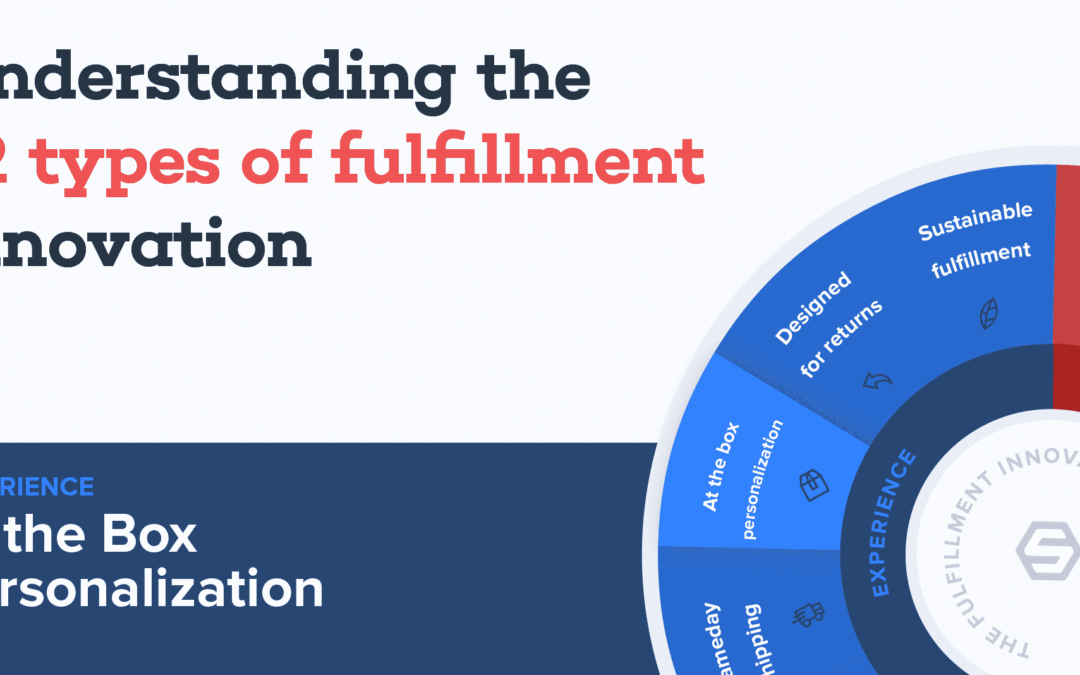
Feb 25, 2021 | Blog, The Fulfillment Innovation Wheel
ShipHero recently launched The Fulfillment Innovation Wheel to help 3PLs understand what capabilities and service offerings they need to implement in order to be successful and to help online retailers and brands choose which 3PL is right for them by allowing them to ‘check the boxes’.
The Fulfillment Innovation Wheel listed a set of twelve (12) capabilities that fulfillment providers and logistics companies should implement to continually delight their customers and push themselves towards greater success and innovation.
The twelve capabilities are:
- 2-Day Delivery
- Same Day Shipping
- At the Box Personalization
- Designed for Returns
- Sustainable Fulfillment
- Resilient Shipping
- Distributed Fulfillment
- Data Now
- Automation
- Scale Up and Out
- Integration Stack
- Professional Services
In this article, we will be diving into Capability #3: At the box personalization.
And be sure to stay tuned for future articles as we deep-dive into each capability.
Capability #3: At the Box Personalization
At the Box Personalization is all the little details in your product’s unboxing experience that truly make customers fall in love with your brand. Imagine getting an unexpected hand-written note, a coupon, or a gift in the box along with your order.
All the excitement and gratitude experienced by the thoughtful presentation of your items generates customer loyalty, while also providing a targeted marketing channel for cross-sell and upsell of items. Not to mention, 59% of Americans receive packages weekly, and 10% receive packages daily. That is quite a large marketing audience in terms of packaging…
By pairing At the Box Personalization with modern-day customer data and analysis, retailers can give more personal, more thoughtful experiences than ever before; say, a gift that they truly love or a coupon for an item they had considered purchasing. You may not sell to Brad Pitt, but your customers will be screaming “WHAT’S IN THE BOX” every time they open your package with these benefits of At the Box Personalization:
Spread Your Brand Organically
Corporations have been successfully using At the Box Personalization for decades, with some customers fully relying on Youtube unboxing videos to guide their purchases, and you can see unboxing ideas all over on Pinterest.
Drive Customer Loyalty
In today’s competitive e-commerce market, most retailers do not manufacture unique goods, so your market differentiators are going to live in that extra ‘wow factor’. At the Box Personalization is proven to cultivate brand loyalty and give customers that jolt of consumer surplus that only comes with getting more bang for your buck — that’s right, we’ve all been conditioned by the Happy Meals toy.
Create Sales Opportunity
Along with the purchased item, retailers can incentivize cross-selling and upselling other products, essentially transforming your packaging into a targeted marketing channel. You can include coupons for relevant or wishlist items, or you can include a gift that requires purchase of other features or parts. And because this occurs in the post-sale phase of the buyer’s journey, it won’t come off as another sales gimmick.
The sky is truly the limit when providing high-quality personalization to your customers, so don’t get weighed down by your 3PL or fulfillment provider. Many fulfillment providers today simply do not provide At the Box Personalization because it reduces efficiency and increases costs.
However, smart fulfillment companies like ShipHero continually innovate their capabilities to offer you a wide range of At the Box Personalization options. Our customers love that ShipHero can easily customize their unboxing experience. We attribute this success on the Fulfillment Innovation Wheel to Capability #3: At the Box Personalization.
Stay tuned next as we cover Capability #7: Distributed Fulfillment! Fulfill Your Dreams… Everywhere. ShipHero.
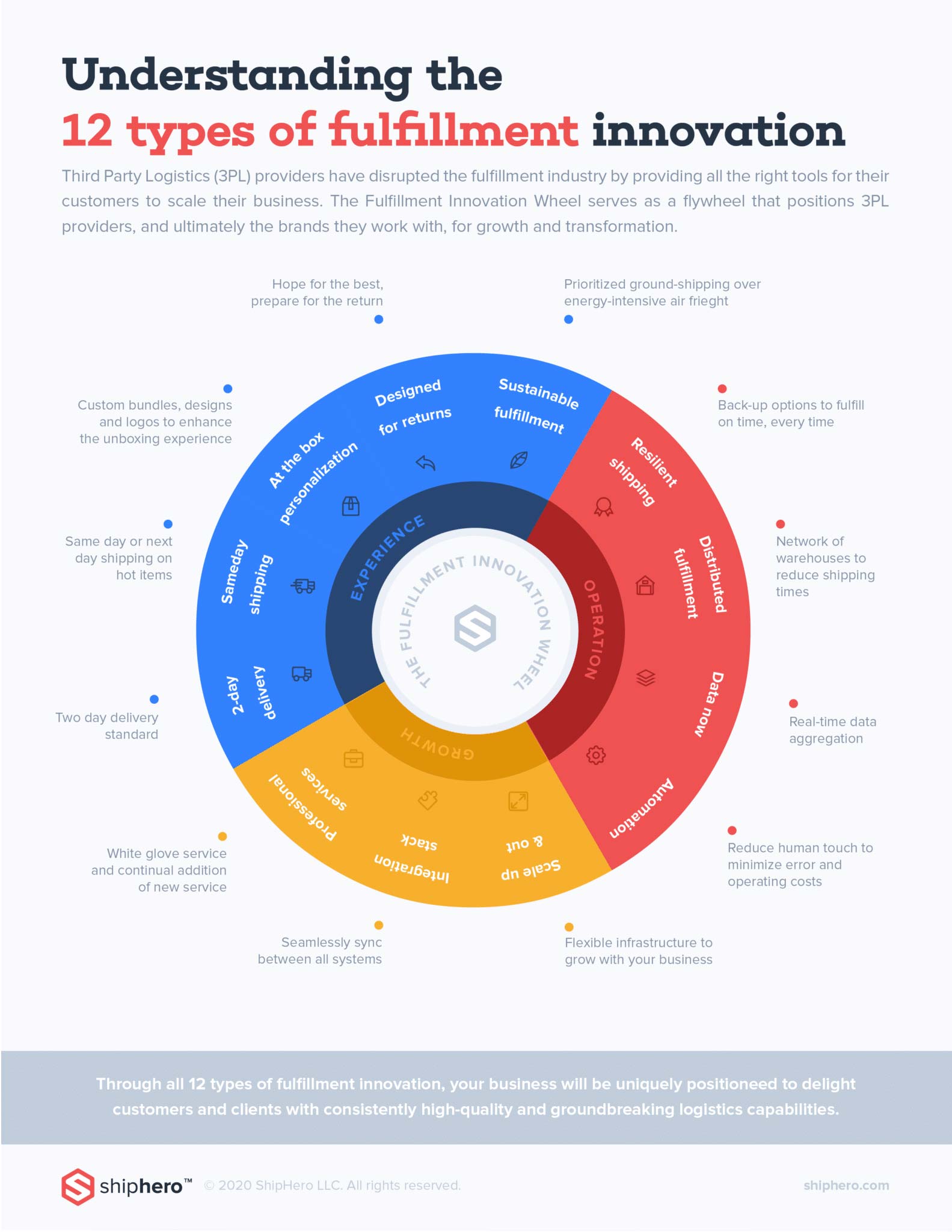
Learn more about ShipHero’s industry-leading warehouse management software.
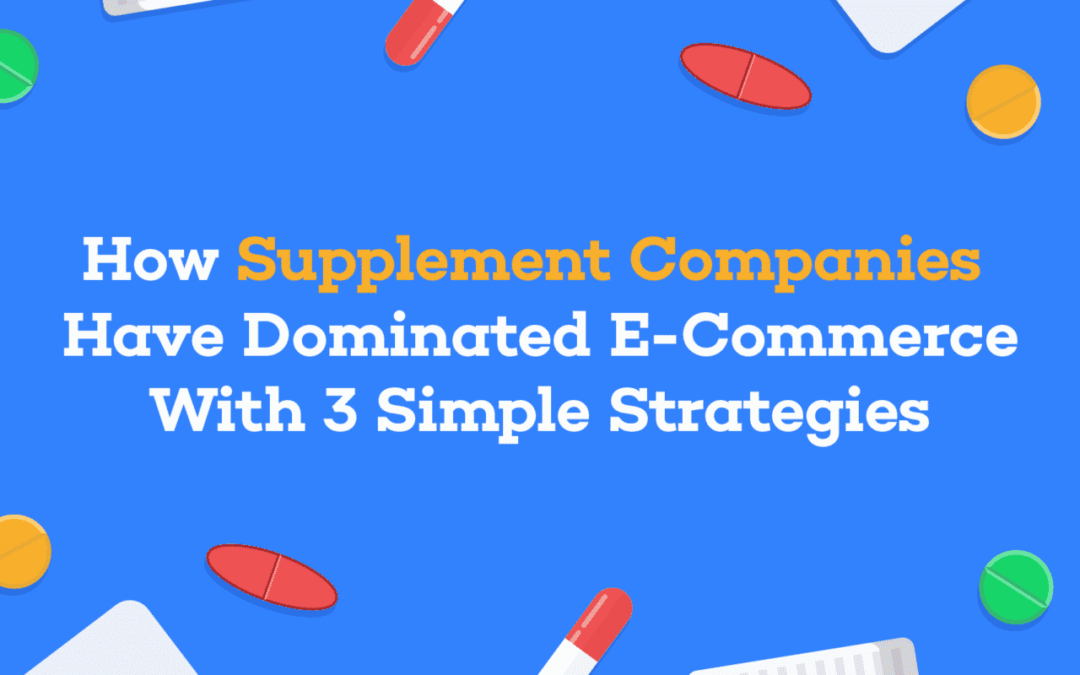
Feb 24, 2021 | Best Practices, Blog, Warehouse Management Software
Look at those gains, bro. Over the last year, the dietary supplement industry has boasted bulging sales growth of 40%, outpacing overall e-commerce by 12%, and they swear it’s all-natural…
The pandemic has certainly brought more awareness to immunity, and overall health and wellness; in fact, 77% of American adults consume dietary supplements, and the average American spends around $56 per month on dietary supplements.
Of course, there are other ways to increase immunity and health, such as at-home workout products and healthy meal kits, but those haven’t grown at nearly the same rate as supplements. So that begs the question…
How have supplement companies dominated e-commerce?
After searching through the supplement industries’ gym bag of secrets, we found that the true secret to their success with the injection of three strategies:
(Serving size: one scoop of each)
- The Subscription Model
- Bundles and Stacks
- Smart Fulfillment
Disclaimer: Ingestion of the following strategies will give you and your e-commerce business a sick pump.
Strategy 1: The Subscription Model
The Subscription Model, or “Subscribe & Save”, is where customers subscribe to weekly, monthly or seasonal purchases and receive discounts upwards of 15% off. Think content streaming services like Netflix or Hulu, recurring subscription box companies like BirchBox, and more recently, supplement and vitamin companies.
Companies that employ the subscription model offer recurring products or services, rather than the traditional, one-time transaction. Brands and businesses that have utilized this approach have reported better customer relationships, improved aggregate data, and more diversity in product offerings.
Turn Customers in Subscribers
Most large companies report that new customers only generate 15 to 25% percent of their revenues, which means that return customers generate the bulk of the revenue. Focusing on return customers and subscribers reduces acquisition costs of targeting new customers, while cultivating brand loyalty.
Gather More Fruitful Customer Data
As reported by Shopify, modeling and storing subscription data allows your company to better engage with your audience and create targeted content along the customer journey.
In fact, many large brands develop separate marketing strategies for subscribers and non-subscribers, as well as strategies to convert non-subscribers to subscribers, including email campaigns and targeted discounts for subscription and account creation.
Sell the Same Product in Multiple Ways
The subscription model gives brands the creative freedom to understand how their customers would prefer to engage with their products and services.
Beyond the price discount, supplement companies could offer subscribers access to free delivery, early bird offers, free trials or samples, gifts with purchase, and much more. As you learn from your subscribers, you are free to adjust your product offerings to better meet their needs!
If you want to learn more about how to create a successful subscription model, check out our blog.
Strategy 2: Bundles
Bundles, or as they’re called in the dietary supplement industry — stacks. Supplement stacks are a bundled variety of supplements for one specific health goal; for example, popular supplement stacks are for the ketogenic diet, weight loss, muscle gain and more.
Bundling products allows companies to cross-sell, provide a more convenient shopping experience, and give customers more flexibility.
Cross-Sell
Bundles are the perfect way for supplement companies to cross-sell products. By intelligently combining multiple products into one item, supplement companies bundle their popular and top-selling supplements with products that normally might not sell on their own (looking at you L-Carnitine). Also, if you have multiple flavors of a gut-drink for example, you can bundle together a variety pack!
Convenience
With just one click, customers can purchase all the supplements that they need. And if you are using the subscription model, their supplements will be auto-fulfilled based on their desired cadence!
Flexibility
Some supplement providers like G Fuel offer their customers the flexibility of building their own bundles — BYOB but healthy!
Strategy 3: Smart Fulfillment
Any supplement company can promise a lucrative subscription model with convenient and flexible bundling options; but in reality, these are extremely complicated to pull off without the right inventory management and order fulfillment process.
In fact, most 3PLs and fulfillment providers simply don’t offer the customization and bundling options that supplement companies need. That’s why you need to supplement your business with the right fulfillment provider.
Convenient Bundling
Through traditional fulfillment methods, creating and shipping customized bundles, kits or bulk orders can be highly complex and downright costly. By offering a subscription service, your brand can sell a variety of items in a variety of ways, so brand owners must be able to group orders quickly and pick a lot of the same product at once, making the fulfillment process quick and simple.
That’s why ShipHero is dedicated to supporting our subscription-based and bundle supplement companies with our newest capability, BulkShip!
BulkShip is an intuitive interface to design preassembled bundles of products, such as a BodyBuilding Stack or a more flexible bundle that would get assembled at fulfillment – like the Build-Your-Own-Bundle option.
Safe Storage and Transport
Supplements must be stored in cool, dry areas, or they risk discoloration, odor, and deterioration. Make sure that your fulfillment provider can take the necessary precautions to protect your inventory in a safe, secure, and climate controlled environment, and take care during the transportation.
Reliable Shipping
Supplements and vitamins are taken regularly and on set cadences, so having a reliable shipping carrier with built-in resiliency is of the utmost importance.
This year has shown that even the most popular carriers, FedEx, UPS and Amazon, are all subject to delays and unreliable shipping times. That’s why ShipHero has seen a huge surge of supplement companies looking to diversify their shipping methods, so that their customers and subscribers receive their supplements when they’re supposed to.
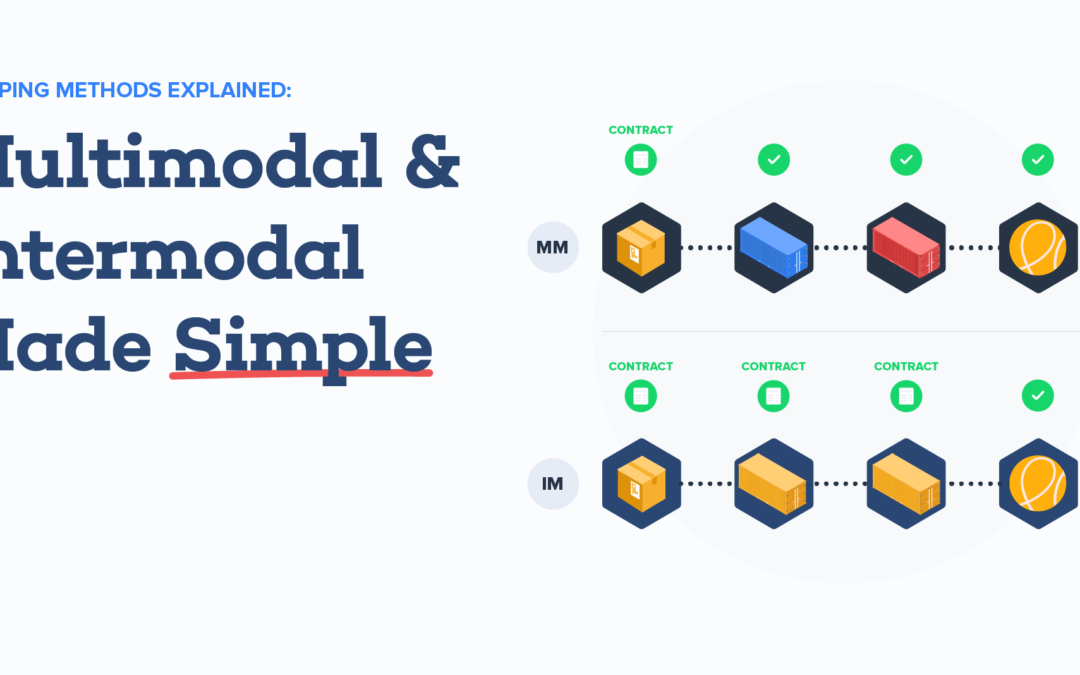
Feb 23, 2021 | Best Practices, Blog, Fulfillment, Warehouse Management Software
Welcome to our Shipping Methods Explained blog series. In this series, we will deep dive into fulfillment methods – that is, how businesses fulfill their online orders and get products to their customers.
Sounds simple right? Well, in theory it is. You could hop on your itty-witty bicycle and hand-deliver your product, mission accomplished. But consider the complexity when your company fulfills hundreds to thousands of orders daily, not to mention the skyrocketing shipping costs that could price you out of the market.
Managing inventory, navigating each carriers’ specific requirements, calculating the lowest cost from thousands of shipping options… it’s a daunting task. That’s why more and more businesses are outsourcing their fulfillment methods.
Are you ready to outsource your fulfillment? Let’s analyze your options to help you decide the best method for your business. In this article, we’ll discuss Multimodal and Intermodal Shipping. What is multimodal and intermodal shipping? What are the pros/cons of each? How do they compare/contrast and which one right for my business, if any? Let’s dive in.
(Check out our previous articles on Dropshipping, FaaS, and FBA/FBM. And be sure to check back for future articles where we’ll cover even more fulfillment methods)
What is Multimodal vs. Intermodal?
Multimodal transport is also known as ‘combined transport’ because the products are moved using different modes of transportation along the fulfillment journey, but under the terms of a single contract and facilitated by a multimodal transport operator (MTO). Whether by road, sea, air or rail, or a combination of them all, the MTO is liable for the entire journey from beginning to end, although they often use sub-contracted carriers that specialize in each mode of transportation.
Intermodal transport involves the use of an intermodal container which carries products throughout the entire fulfilment journey; regardless of the type of transportation, the same intermodal container will be offloaded from one method and loaded onto the next without ever moving the product inside.
The main difference between multimodal and intermodal transport is: 1) how the product is transferred between transportation modes, and 2) how the contracts are made with each carrier.
Product Transfer
With multimodal transport, the products or commodities are loaded and unloaded into transportation-specific containers when transferring, say, between sea and rail, rail and ground, etc. Excessive product transfer may result in product damage or loss; you may have heard the phrase “fallen out of a truck” when asking your relative about an expensive purse they clearly can’t afford. In fact, product damage during transportation costs up to $0.48 per pallet annually, which certainly adds up over time with larger supply chains.
This is the benefit of intermodal transport, because the products are loaded into a single intermodal container to be used for several modes of transportation. The products themselves will remain secure as the container itself is loaded and offloaded from a truck, train, ship or air freight.
Using one intermodal container allows for safer packing of products, which results in less damage and loss, as well as quicker and more efficient movement between freight methods. For this reason, intermodal transport tends to be less costly than multimodal transport.
Contracting Carriers
During a multimodal transport, the shipper creates a single contract with the Multimodal Transport Operator (MTO), which is wholly responsible for the cargo from the origin to the end destination. This allows the shipper to simplify the communication process by just working with a sole transport provider or agent. Also, the simplified communication allows for more accurate shipping updates, tracking notifications, and opportunities for optimization. On the other hand, the shipper must rely on the MTO to select the best/cheapest routes for their cargo, and flexibility is limited.
Conversely, during an intermodal transport, the shipper must create multiple contracts with individual carriers. While there is only one intermodal container, it will be passed between many liable parties, increasing the complexity for the shipper in terms of communication and optimization across carriers; however, the shipper has more flexibility to independently choose each leg of the fulfillment journey.
In summary:
Multimodal Transport
- Multiple carriers, one contract with MTO
- Product transfers containers between transports
- Enhanced communication and optimization, but heavy reliance on MTO routes
- More chance of product damage and loss
Intermodal Transport
- One intermodal container, multiple contracts with carriers
- Products remain secure in single shipping container
- More flexibility to choose your own routes along fulfillment journey, but more complexity for the shipper
- Less chance of product damage and loss
In conclusion, shippers must determine if multimodal or intermodal is the right choice given their circumstances, i.e., is your product fragile or at risk of damage/loss, do you have the resources to schedule and manage carrier contracts, etc. Thankfully, smart fulfillment providers and 3PLs like ShipHero can help you determine the best way to ship.
Be sure to stay tuned to our Shipping Methods Explained series as we deep dive into the specifics of fulfillment.
Learn more about ShipHero’s industry-leading warehouse management software.
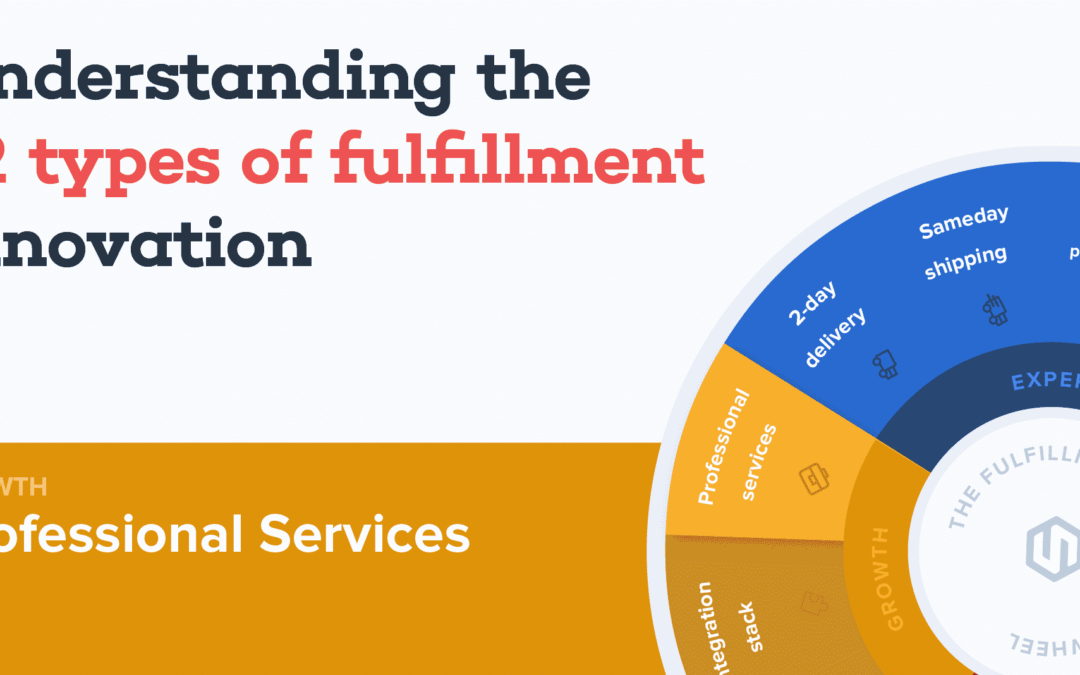
Feb 15, 2021 | Blog, The Fulfillment Innovation Wheel
ShipHero recently launched The Fulfillment Innovation Wheel to help 3PLs understand what capabilities and service offerings they need to implement in order to be successful and to help online retailers and brands choose which 3PL is right for them by allowing them to ‘check the boxes’.
The Fulfillment Innovation Wheel listed a set of twelve (12) capabilities that fulfillment providers and logistics companies should implement to continually delight their customers and push themselves towards greater success and innovation.
The twelve capabilities are:
- 2-Day Delivery
- Same Day Shipping
- At the Box Personalization
- Designed for Returns
- Sustainable Fulfillment
- Resilient Shipping
- Distributed Fulfillment
- Data Now
- Automation
- Scale Up and Out
- Integration Stack
- Professional Services
In this article, we will be diving into Capability #12: Professional services.
And be sure to stay tuned for future articles as we deep-dive into each capability.
Capability #12: Professional Services
If you want to grow your business, your Warehouse Management Software (WMS) needs to keep up by collecting and processing more data, offering users more capabilities and automation, and providing more customizable reports and integrations. As WMS grow more and more powerful with each iteration, naturally so does its complexity. That’s why business owners who want to get the most out of their WMS are turning to Professional Services offered by their fulfillment provider.
Customization
App developers try to make WMS interfaces as easy to use as possible, and often take a one-size-fits-all approach to developing their solution. When that doesn’t cut it for your business, Professional Services are the perfect way to custom-fit the solution to your exact specifications.
ShipHero customers can select a wide range of customization services that include (but are not limited to):
- Custom reports
- Custom invoices and labeling
- Custom API integrations
- And more!
Error Correction
Everyone makes mistakes! Professional Services are the easy way to get you right back on track with your WMS.
For error correction, ShipHero offers:
- Manual/Bulk Data correction
- Re-running Automation Rules
- Integration testing/debugging
- And more!
Consulting
Sometimes you just need an expert opinion. Warehouse process and development experts stand at the ready to help you figure out the tough problems.
ShipHero’s experts are available to provide:
- Warehouse Process Consulting
- API Consulting
- Onboarding Consulting
- And more!
So, does your fulfillment provider give you the attention and service that you need? Whether you need a quick fix over the phone or a more hands-on approach with our onsite visits, ShipHero helps its customers any way they can through their extensive list of Professional Service. Not only that, ShipHero maintains a community of customers that all chip in to help each other.
It’s this white-glove approach to service that brings an average of 100 new signups for our fulfillment service per day, and we attribute this success on the Fulfillment Innovation Wheel to Capability #12: Professional Services.
Stay tuned next as we cover Capability #11: Integration Stack! Integrate-ful for your business. ShipHero.

Learn more about ShipHero’s industry-leading warehouse management software.
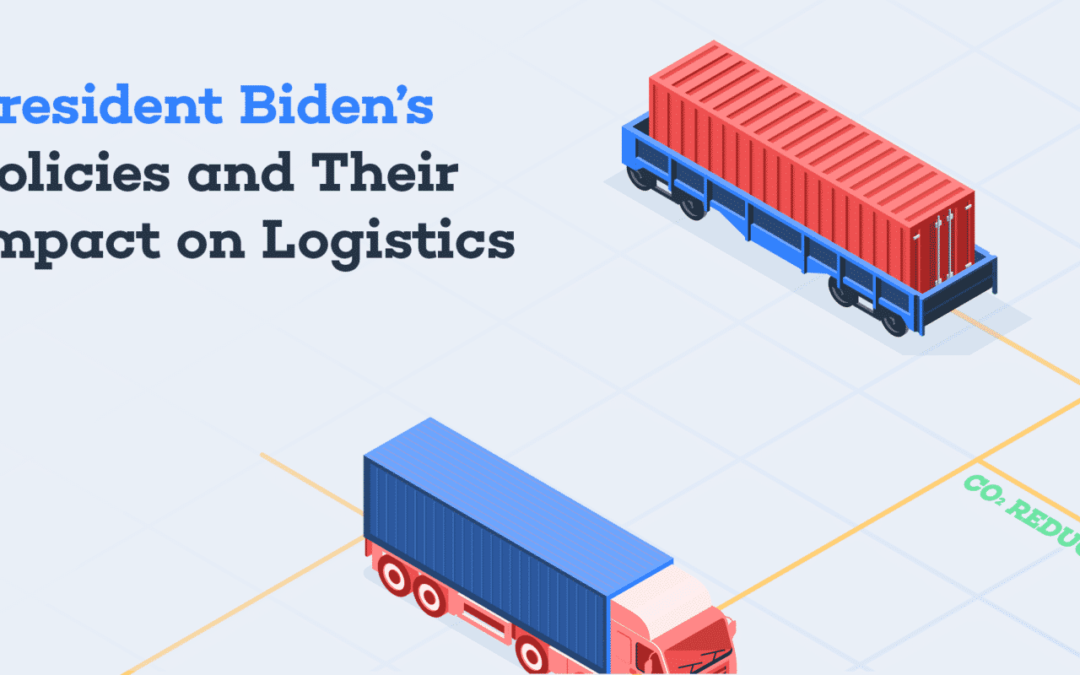
Feb 11, 2021 | Best Practices, Blog, Fulfillment, Warehouse Management Software, Warehouse Operations
The incumbent President of the United States made quick work in demonstrating to our citizens and the rest of the world exactly what our country’s priorities will be for the next four years and beyond. Within his first week of taking office, President Joe Biden enacted a long list of executive orders that sought solutions to the pressing issues stemming from the COVID-19 pandemic, immigration, and climate change.
Sustainability has been of great importance to the Biden administration since his Vice Presidency, and continued to be a main aspect of his campaign during the 2020 election, so it came as no surprise when President Joe Biden signed an executive order to initiate his plan to combat climate change through a Clean Energy Revolution and Environmental Justice.
No matter who you voted for, it’s time to get acquainted with his stance on climate change, what measures the government will be taking to lower our carbon footprint, and how the logistics industry will be impacted. In essence, it comes down to carbon emissions and the railroad.
Carbon Emissions
Under Biden’s leadership, the United States rejoined the Paris Agreement on climate change, which calls us to determine a reduction target for emissions and direct our federal agencies to execute on that promise.
For example, US agencies have been directed to purchase American-made, zero-emission vehicles, and suspend new oil and natural gas leases on public lands in hopes to conserve at least 30% of federal lands and waters over the next ten years.
The Biden Plan for a Clean Energy Revolution and Environmental Justice also promises to make major public investments in automobile infrastructure, including 500,000 electric vehicle charging stations, while accelerating R&D on battery technology and battery production. This is sure to increase production and widespread use of EV vehicles, buses, and trucks for transportation.
Impact to Logistics
Sustainability
As the current pandemic situation unfolds, sustainability in the supply chain has gone by the wayside as urgency and necessity push for speed and reliability in shipping. But even still, some shoppers opt to use the Amazon Day feature to try and offset their purchases with their rationale being, if they have to come here, at least let them bring more than one thing. Post-COVID however, sustainability will be sure to resume as a large priority for consumers and retailers once more.
For fulfillment providers, retailers will push for low-carbon and zero-carbon (if not negative) emissions throughout the supply chain. There will be a push for clean transportation options, namely electric vehicles (EV) including electric trucks for long-distance shipping, whereas air freight has the worst carbon emissions.
Although it remains unclear what Environmental Justice specifically entails, we don’t find it out of the realm of possibilities that a national carbon tax could be introduced similar to Canada, Britain or some US states, or rather an incentivized stimulus for low-emitting companies. If enacted, a carbon tax could make logistics companies like Amazon rethink their air-heavy fulfillment strategy and make way for 3PLs that are built on sustainable practices.
But where, WHERE, are these sustainable transportation methods coming from?, you may have shouted into your computer screen. Well, toot toot, the answer to that falls on…
The Railroad
Biden’s plan aims to spark “The Second Great Railroad Revolution”, a push to modernize US rail infrastructure, which will ensure that we have the cleanest, safest, and fastest rail system in the world — for both passengers and freight.
A US Rail Revolution will not only reduce pollution, by working with Amtrak and private freight rail companies to further electrify the rail system, but also provide workers with “good, union” jobs and stimulate investment in communities better linked to major metropolitan areas. In order to streamline the loan process and make capital more available for the railway industry, Biden has tapped existing federal grant and loan programs at the US Department of Transportation.
Impact to Logistics
Multi-modal
Currently, fulfillment is dominated by ground travel, with long-distance trucking and last-mile delivery vans. Although rail freight can carry 400 times what a single truckload can with much fewer emissions, the current process for fulfillment by rail is too complex and downright costly. However, Biden’s plan could be the answer for this.
By modernizing rail freight and designing it for today’s eCommerce world, rail freight could once again become a viable option, and 3PL providers that account for this shift could disrupt the logistics industry entirely by cornering the multi-modal transportation space.
Multi-modal transport (also known as combined transport) is the transportation of goods under a single contract, but performed with at least two different modes of transport, often performed by contracted sub-carriers. The carrier responsible for the entire carriage is referred to as a multimodal transport operator, or MTO.
So, any 3PL that can become the leading MTO could position themselves to become the 4th major player in logistics and fulfillment, with UPS and Fedex at capacity, and Amazon weighed down by its traditional infrastructure.
Conclusion
We’re no fulfill-osophers, but we do predict that a smart logistics provider like ShipHero, one built to scale through agility, will be perfectly positioned to quickly claim market share and delight their customers with sustainable shipping and multi-modal options.
Through use of already existing clean energy and green technologies, the logistics industry can lead the way towards sustainable practices in eCommerce supply chains. Moreover, the pandemic-caused boom of eCommerce has given rise to a plethora of opportunities and growth in the fulfillment space; and where money goes, progress follows.
Investments to improve fulfillment practices driven by big data and blockchain will be the spark necessary for companies to derive ROI from their sustainable practices, and effectively contribute to Green Joe’s climate plan.
Learn more about ShipHero’s industry-leading warehouse management software.





